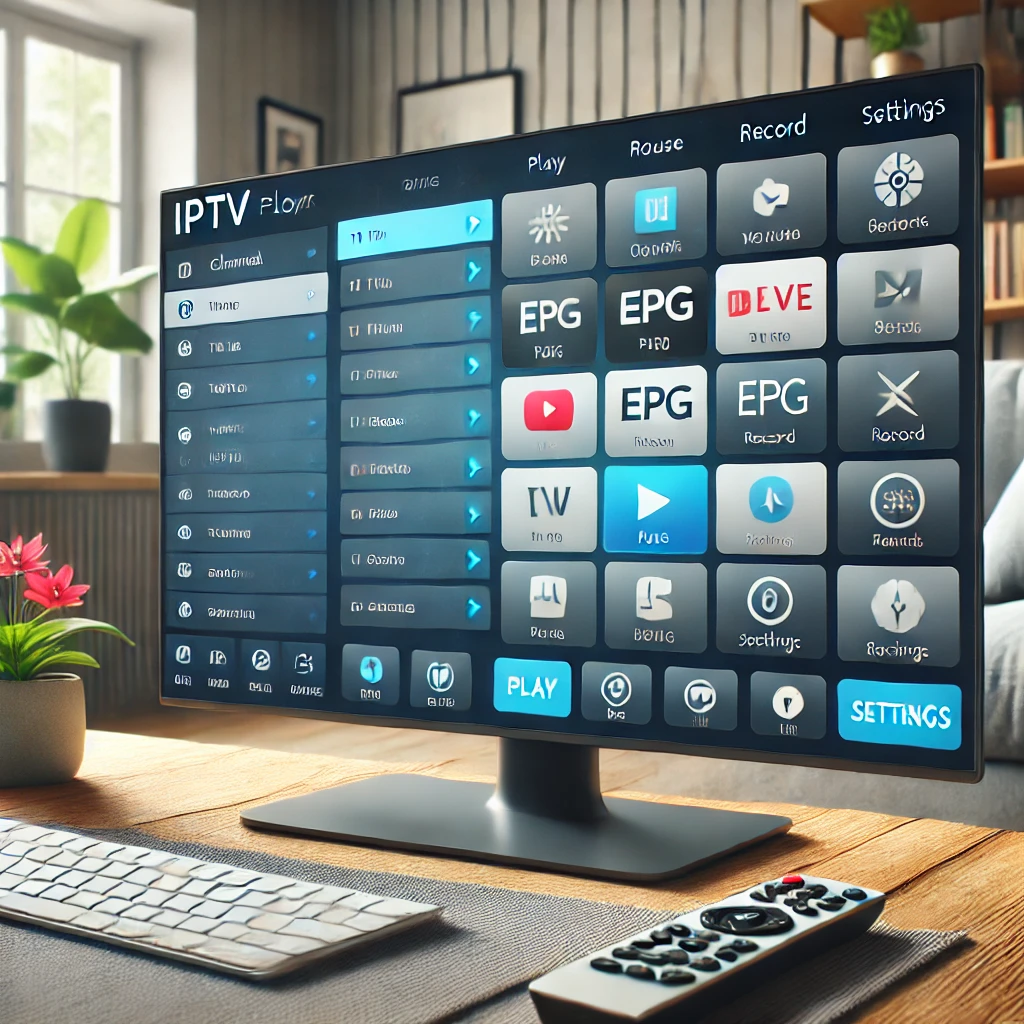The Best IPTV Player for Windows A Comprehensive Guide
Table of Contents
- Introduction
- Understanding IPTV
- What is IPTV?
- Why Use an IPTV Player?
- Key Features of the Best IPTV Players for Windows
- Essential Features to Look for in an IPTV Player
- Advanced Features for Power Users
- Top IPTV Players for Windows
- VLC Media Player
- Kodi
- Perfect Player
- MyIPTV Player
- ProgDVB/ProgTV
- Comparing the Best IPTV Players
- VLC vs. Kodi: Which is Better for IPTV?
- Perfect Player vs. MyIPTV Player
- How to Choose the Right IPTV Player for Your Needs
- Factors to Consider When Choosing an IPTV Player
- User Reviews and Ratings
- Setting Up and Using Your IPTV Player
- Step-by-Step Guide to Setting Up IPTV on Windows
- Troubleshooting Common Issues
- Legal and Safety Considerations
- Conclusion
- FAQs
-
Introduction
H1: The Best IPTV Player for Windows: A Comprehensive Guide
In today’s digital age, more and more people are turning to Internet Protocol Television (IPTV) for their viewing needs. IPTV offers a flexible and efficient way to access a wide range of TV channels and on-demand content over the internet. However, to make the most out of your IPTV experience, choosing the right IPTV player is crucial. This guide aims to help you find the best IPTV player for Windows by providing an in-depth look at the top options available, their key features, and how to set them up.
Whether you’re a beginner looking to understand what IPTV is or an experienced user seeking advanced features, this comprehensive
guide will cover everything you need to know about the best IPTV player for Windows.
-
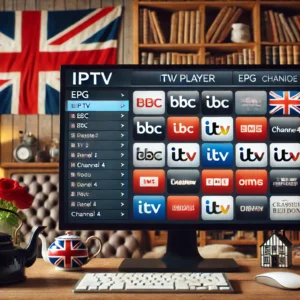
best player for iptv windows -
Understanding IPTV
H2: What is IPTV?
IPTV, or Internet Protocol Television, is a method of delivering television content over the internet. Unlike traditional cable or satellite TV, IPTV uses the internet to stream live TV channels, movies, and other content. This technology allows users to watch their favorite shows on various devices, including smartphones, tablets, smart TVs, and computers.
Key Benefits of IPTV:
- Flexibility: Watch content anytime, anywhere, as long as you have an internet connection.
- Variety: Access to a wide range of channels and on-demand content.
- Interactivity: Features like pause, rewind, and fast-forward enhance the viewing experience.
- Cost-Effective: Often more affordable than traditional cable or satellite TV subscriptions.
H2: Why Use an IPTV Player?
An IPTV player is essential for accessing and enjoying IPTV content. These players are designed to provide a seamless and user-friendly experience. Here are some reasons why you should use an IPTV player:
- User-Friendly Interface: IPTV players come with intuitive interfaces that make navigation easy.
- Enhanced Viewing Experience: Features like Electronic Program Guides (EPG), customizable settings, and high-definition streaming enhance the overall experience.
- Compatibility: IPTV players support various file formats and can be used on multiple devices.
- Recording Capabilities: Many IPTV players allow you to record live TV and watch it later.
In the following sections, we will explore the key features to look for in an IPTV player, review the top IPTV players for Windows, and provide a comprehensive comparison to help you make an informed decision.
Key Features of the Best IPTV Players for Windows
H2: Essential Features to Look for in an IPTV Player
When choosing an IPTV player, several essential features ensure a smooth and enjoyable viewing experience. Here are some key features to consider:
- User-Friendly Interface:
- A clean and intuitive interface makes it easier to navigate through channels and settings.
- Look for customizable interfaces that allow you to personalize your viewing experience.
- Compatibility with Various File Formats:
- Ensure the IPTV player supports multiple file formats such as M3U, XSPF, and others.
- Compatibility with various codecs ensures smooth playback of different types of content.
- EPG (Electronic Program Guide) Support:
- An EPG provides a schedule of upcoming programs, making it easier to find and watch your favorite shows.
- Look for players that offer detailed and accurate EPGs.
- Recording Capabilities:
- The ability to record live TV is a valuable feature for those who want to watch content later.
- Check if the player allows scheduled recordings and supports different storage options.
- Customizable Settings:
- Advanced settings let you tweak the player according to your preferences.
- Look for options like parental controls, subtitle support, and audio settings.
H2: Advanced Features for Power Users
For those who want more from their IPTV player, here are some advanced features to look for:
- Multi-Device Support:
- Some IPTV players offer synchronization across multiple devices, allowing you to pick up where you left off.
- This feature is ideal for households with multiple users and devices.
- Integration with Streaming Services:
- Integration with popular streaming services like Netflix, Hulu, and Amazon Prime can enhance your viewing experience.
- Look for players that offer easy access to these services within the same interface.
- High-Definition and 4K Streaming Support:
- Ensure the player supports high-definition (HD) and 4K streaming for a superior viewing experience.
- Check for support of HDR (High Dynamic Range) content for better color and contrast.
- Parental Controls:
- Parental controls allow you to restrict access to certain content, making it safe for children.
- Look for customizable control options and easy setup.
H2: Feature Comparison Table
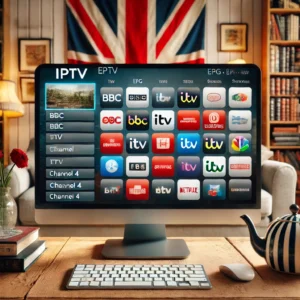
best player iptv To help you choose the best IPTV player for Windows, here’s a comparison table highlighting the key features of some popular IPTV players:
Feature VLC Media Player Kodi Perfect Player MyIPTV Player ProgDVB/ProgTV User-Friendly Interface Yes Yes Yes Yes Yes File Format Compatibility High High High High High EPG Support Limited Extensive Extensive Extensive Extensive Recording Capabilities No Yes Yes Yes Yes Customizable Settings Yes Yes Yes Yes Yes Multi-Device Support No Yes No No Yes Streaming Service Integration No Yes No No No HD and 4K Support Yes Yes Yes Yes Yes Parental Controls No Yes Yes Yes Yes This table provides a quick overview of the features offered by each player, making it easier to identify the one that best suits your needs.
Top IPTV Players for Windows
H2: Best IPTV Player for Windows in 2024
With numerous IPTV players available, choosing the best one can be challenging. Here, we review the top-rated IPTV players for Windows, focusing on their features, pros, and cons.
H3: VLC Media Player
Overview: VLC Media Player is one of the most popular media players, known for its versatility and wide range of supported formats. It’s a free, open-source player that is highly reliable for streaming IPTV content.
Key Features:
- Supports a wide variety of file formats.
- Simple and user-friendly interface.
- Offers basic IPTV functionalities.
- Lightweight and doesn’t consume much system resources.
Pros:
- Free and open-source.
- Regular updates and strong community support.
- Can handle almost any media file type.
Cons:
- Limited advanced IPTV features.
- No built-in EPG support.
- Lacks recording capabilities.
How to Set Up VLC for IPTV:
- Download and Install VLC:
- Visit the official VLC website and download the latest version.
- Follow the installation instructions.
- Add IPTV Playlist:
- Open VLC and go to
Media > Open Network Stream. - Enter the IPTV playlist URL (M3U file).
- Click
Playto start streaming.
- Open VLC and go to
H3: Kodi
Overview: Kodi is a powerful and highly customizable media player that supports various add-ons, making it a popular choice for IPTV. It’s open-source and offers extensive features for both basic and advanced users.
Key Features:
- Extensive add-on support for IPTV.
- Customizable interface with numerous skins.
- Supports EPG, recording, and other advanced features.
Pros:
- Highly customizable.
- Supports a wide range of add-ons.
- Strong community support.
Cons:
- Can be complex to set up for beginners.
- Requires regular maintenance for add-ons.
Step-by-Step Guide to Installing IPTV Add-ons:
- Download and Install Kodi:
- Visit the official Kodi website and download the latest version.
- Follow the installation instructions.
- Add IPTV Add-on:
- Open Kodi and go to
Add-ons > Download > Video Add-ons. - Search for and install the IPTV add-on (e.g., PVR IPTV Simple Client).
- Open Kodi and go to
- Configure the Add-on:
- Open the installed add-on and go to
Settings. - Enter the M3U playlist URL and EPG URL.
- Enable the add-on and start streaming.
-
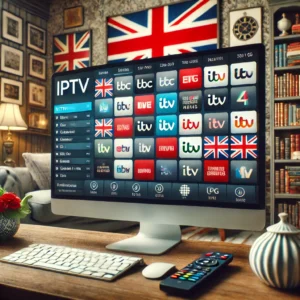
best iptv player for windows
- Open the installed add-on and go to
H3: Perfect Player
Overview: Perfect Player is a well-known IPTV player designed for both beginners and advanced users. It offers a simple interface and a range of features, making it a strong contender for the best IPTV player for Windows.
Key Features:
- Easy-to-use interface.
- Supports M3U and XSPF playlists.
- EPG support and customizable settings.
Pros:
- User-friendly.
- Supports multiple playlists and EPGs.
- Regular updates and good performance.
Cons:
- No recording capabilities.
- Limited to IPTV functionalities.
Setting Up Perfect Player for IPTV:
- Download and Install Perfect Player:
- Visit the official Perfect Player website and download the latest version.
- Follow the installation instructions.
- Configure IPTV Playlist:
- Open Perfect Player and go to
Settings > General. - Enter the M3U playlist URL and EPG URL.
- Save the settings and start streaming.
- Open Perfect Player and go to
H3: MyIPTV Player
Overview: MyIPTV Player is a Windows-specific IPTV player that offers a range of features tailored for Windows users. It’s free to use and provides a smooth streaming experience.
Key Features:
- Supports M3U playlists and EPG.
- User-friendly interface.
- Recording capabilities.
Pros:
Cons:
- Limited to Windows platform.
- Fewer advanced features compared to other players.
How to Configure MyIPTV Player:
- Download and Install MyIPTV Player:
- Visit the Microsoft Store and download MyIPTV Player.
- Follow the installation instructions.
- Add IPTV Playlist:
- Open MyIPTV Player and go to
Settings > Add new playlist and EPG source. - Enter the M3U playlist URL and EPG URL.
- Save the settings and start streaming.
- Open MyIPTV Player and go to
H3: ProgDVB/ProgTV
Overview: ProgDVB/ProgTV is a versatile IPTV player that offers a range of advanced features for power users. It supports both DVB and IPTV sources, making it a comprehensive solution for streaming.
Key Features:
- Supports DVB-S, DVB-S2, DVB-C, DVB-T, ATSC, ISDB-T, and IPTV.
- EPG support and recording capabilities.
- Customizable interface and settings.
Pros:
- Highly versatile and feature-rich.
- Supports a wide range of sources.
- Advanced recording and scheduling features.
Cons:
- Can be complex to set up.
- Requires a paid version for some advanced features.
Installation and Setup Guide:
- Download and Install ProgDVB/ProgTV:
- Visit the official ProgDVB website and download the latest version.
- Follow the installation instructions.
- Configure IPTV:
- Open ProgDVB/ProgTV and go to
Settings > TV Sources. - Add a new IPTV source and enter the M3U playlist URL.
- Save the settings and start streaming.
-
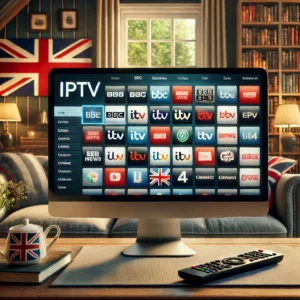
best iptv player for windows
- Open ProgDVB/ProgTV and go to
Comparing the Best IPTV Players
-
H2: VLC vs. Kodi: Which is Better for IPTV?
Choosing between VLC Media Player and Kodi for IPTV can be challenging, as both have their strengths. Here, we compare the two based on various criteria to help you decide which one suits your needs better.
1. User Interface:
- VLC Media Player: VLC has a straightforward, minimalist interface that is easy to navigate, even for beginners. It focuses on simplicity and functionality.
- Kodi: Kodi offers a more complex and customizable interface with numerous skins and add-ons. It may take some time to get used to, but it provides a richer user experience.
2. Setup and Configuration:
- VLC Media Player: Setting up VLC for IPTV is simple and quick. You just need to add the M3U playlist URL to start streaming.
- Kodi: Kodi requires a bit more effort to set up, especially when installing and configuring IPTV add-ons. However, once set up, it offers extensive functionalities.
3. Features:
- VLC Media Player: VLC supports a wide range of file formats and codecs, making it versatile for various media types. However, it lacks advanced IPTV features like EPG and recording.
- Kodi: Kodi excels in features, supporting EPG, recording, multiple add-ons, and integration with other streaming services. It’s ideal for users looking for a comprehensive media solution.
4. Performance:
- VLC Media Player: VLC is lightweight and performs well on most systems without consuming much resources.
- Kodi: Kodi is more resource-intensive and may require a more powerful system to run smoothly, especially with multiple add-ons.
5. Community and Support:
- VLC Media Player: VLC has a large user base and active community, ensuring regular updates and extensive support.
- Kodi: Kodi also has a robust community and strong support network, with numerous forums and resources for troubleshooting.
Conclusion:
- Choose VLC Media Player if: You want a simple, lightweight player that is easy to set up and use.
- Choose Kodi if: You are looking for a highly customizable player with extensive features and don’t mind spending some time on setup.
H2: Perfect Player vs. MyIPTV Player
Next, we compare Perfect Player and MyIPTV Player, both of which are popular choices for IPTV on Windows.
1. User Interface:
- Perfect Player: Perfect Player features a clean, intuitive interface that is easy to navigate. It supports multiple playlists and EPGs.
- MyIPTV Player: MyIPTV Player also offers a user-friendly interface tailored for Windows users. It integrates well with the Windows ecosystem.
2. Setup and Configuration:
- Perfect Player: Setting up Perfect Player involves adding the M3U playlist and EPG URLs in the settings. It’s straightforward and quick.
- MyIPTV Player: MyIPTV Player is designed to be simple to configure, with easy steps to add playlists and EPGs via its settings menu.
3. Features:
- Perfect Player: Perfect Player supports various file formats and offers features like EPG support and multiple playlists. However, it lacks recording capabilities.
- MyIPTV Player: MyIPTV Player supports recording, multiple playlists, and EPGs, making it slightly more feature-rich for those looking for recording functionalities.
4. Performance:
- Perfect Player: Known for its stability and smooth performance, Perfect Player runs efficiently on most systems.
- MyIPTV Player: MyIPTV Player is optimized for Windows and performs well, though it may require more system resources for recording.
5. Community and Support:
- Perfect Player: Has a dedicated user base and good support through forums and online resources.
- MyIPTV Player: Also has a strong community and benefits from being available on the Microsoft Store, which provides additional support channels.
Conclusion:
- Choose Perfect Player if: You need a simple, stable IPTV player with support for multiple playlists and EPGs, and don’t require recording features.
- Choose MyIPTV Player if: You want recording capabilities and a player that integrates well with Windows, with a focus on ease of use and setup.
Summary Table
Criteria VLC Media Player Kodi Perfect Player MyIPTV Player User Interface Simple Customizable Intuitive User-friendly Setup and Configuration Easy Moderate Easy Easy Features Basic Extensive Moderate Extensive Performance Lightweight Resource-intensive Stable Stable Community and Support Strong Strong Good Good -

best player iptv -
How to Choose the Right IPTV Player for Your Needs
H2: Factors to Consider When Choosing an IPTV Player
Choosing the right IPTV player can significantly enhance your viewing experience. Here are some crucial factors to consider:
1. Compatibility with Your Device and Operating System:
- Ensure the IPTV player is compatible with your device. While this guide focuses on Windows, some players are cross-platform and can be used on other operating systems as well.
- Check system requirements to ensure smooth performance.
2. User Interface and Ease of Use:
- A user-friendly interface makes navigation easy and enhances your overall experience.
- Look for customizable interfaces that allow you to adjust settings according to your preferences.
3. Available Features and Functionalities:
- Identify the features that are most important to you, such as EPG support, recording capabilities, multi-device support, and integration with other streaming services.
- Ensure the player supports the file formats and codecs you need.
4. Community Support and Regular Updates:
- Players with strong community support and regular updates are more reliable and offer better long-term usability.
- Check online forums, user reviews, and the player’s official website for information on updates and support.
5. Performance and Stability:
- Choose a player known for its stability and performance to avoid interruptions during streaming.
- Look for reviews and performance benchmarks to ensure the player runs efficiently on your system.
H2: User Reviews and Ratings
1. Importance of Reading User Reviews:
- User reviews provide real-world insights into the performance and usability of an IPTV player.
- They can highlight common issues and benefits that you may not find in official descriptions.
2. Where to Find Reliable Reviews and Ratings:
- Official Websites and App Stores: Many IPTV players have user reviews and ratings on their official websites and app stores like the Microsoft Store.
- Technology Forums and Communities: Websites like Reddit, AVSForum, and IPTV-specific forums offer user discussions and reviews.
- Review Aggregator Sites: Websites like Trustpilot, Capterra, and G2 collect and aggregate user reviews for various software.
3. What to Look for in Reviews:
- Consistency: Look for recurring themes in the reviews. If multiple users mention the same pros or cons, they are likely accurate.
- Detailed Feedback: Reviews that provide detailed feedback on specific features and performance are more valuable than generic comments.
- Recent Reviews: Focus on recent reviews to ensure the information is up-to-date, especially if the player receives regular updates.
Case Study: Comparing User Reviews for VLC and Kodi
VLC Media Player:
- Pros: Users appreciate VLC’s versatility and ability to play almost any media file. Its simplicity and lightweight nature are frequently praised.
- Cons: Some users note the lack of advanced IPTV features and the basic interface.
Kodi:
- Pros: Users love Kodi’s extensive customization options and the wide range of add-ons available. The community support and frequent updates are also highlighted.
- Cons: The initial setup can be complex, and it requires more system resources compared to VLC.
Conclusion: By considering these factors and reading user reviews, you can make an informed decision on the best IPTV player for your needs. The next section will provide step-by-step instructions on setting up and using your chosen IPTV player.
Setting Up and Using Your IPTV Player
H2: Step-by-Step Guide to Setting Up IPTV on Windows
Setting up an IPTV player on Windows is a straightforward process. Below are detailed instructions for setting up some of the most popular IPTV players.
VLC Media Player
1. Download and Install VLC:
- Go to the official VLC website and download the latest version.
- Run the installer and follow the on-screen instructions to complete the installation.
2. Add IPTV Playlist:
- Open VLC Media Player.
- Click on
Mediain the top menu, then selectOpen Network Stream. - In the window that appears, enter the URL of your IPTV playlist (usually an M3U file).
- Click
Playto start streaming the IPTV channels.
Tips:
- Ensure your M3U playlist URL is active and correct.
- You can save the playlist for easier access in the future by clicking
Media > Save Playlist to File.
Kodi
1. Download and Install Kodi:
- Visit the official Kodi website and download the latest version for Windows.
- Run the installer and follow the on-screen instructions.
2. Add IPTV Add-on:
- Open Kodi and go to
Add-ons. - Click on the
Downloadicon, then selectPVR Clients. - Find and install
PVR IPTV Simple Client.
3. Configure the Add-on:
- After installation, go to
Add-ons > My add-ons > PVR Clients. - Select
PVR IPTV Simple Clientand clickConfigure. - Under the
Generaltab, enter the M3U playlist URL. - Click
OKand restart Kodi.
4. Enable the Add-on:
- Go to
Settings > PVR & Live TV > General. - Enable the
PVR Managerand selectEnableforPVR IPTV Simple Client.
Tips:
- For a more enriched experience, install additional add-ons from the Kodi repository.
- Customize the interface using skins available in the settings.
Perfect Player
1. Download and Install Perfect Player:
- Visit the Perfect Player website and download the Windows version.
- Install the software following the on-screen instructions.
- Open Perfect Player.
- Go to
Settings > General. - Under the
Playlistsection, enter the M3U playlist URL. - Under the
EPGsection, enter the EPG URL if available.
3. Customize Settings:
- Adjust settings such as buffer size, interface language, and video decoder options based on your preferences.
Tips:
- Use the
Advancedsettings for more control over the player’s functionalities. - Regularly update the playlist and EPG for the best performance.
MyIPTV Player
1. Download and Install MyIPTV Player:
- Go to the Microsoft Store and search for
MyIPTV Player. - Download and install the application.
2. Add IPTV Playlist:
- Open MyIPTV Player and go to
Settings > Add new playlist and EPG source. - Enter the M3U playlist URL and EPG URL.
- Name the playlist and save the settings.
3. Start Streaming:
- Go back to the main menu and select your playlist.
- Click
Channelsto start watching your IPTV content.
Tips:
- Use the recording feature to save live TV shows and movies.
- Customize the interface and playback settings for a better viewing experience.
ProgDVB/ProgTV
1. Download and Install ProgDVB/ProgTV:
- Visit the ProgDVB website and download the latest version.
- Follow the installation instructions.
2. Configure IPTV:
- Open ProgDVB/ProgTV and go to
Settings > TV Sources. - Add a new IPTV source and enter the M3U playlist URL.
3. Customize Settings:
- Adjust settings such as video quality, interface language, and channel sorting.
- Use the EPG and recording features for enhanced functionality.
Tips:
- Explore the advanced settings for more control over the player’s behavior.
- Regularly update the software for the best performance.
H2: Troubleshooting Common Issues
Even with the best IPTV players, you may encounter some common issues. Here are solutions to some of the most frequent problems:
1. Buffering or Lagging:
- Ensure your internet connection is stable and fast enough for streaming.
- Lower the streaming quality in the player’s settings.
- Close other applications that may be using bandwidth.
2. Playlist Not Loading:
- Check if the M3U playlist URL is correct and active.
- Try reloading the playlist or using a different URL.
- Ensure the player supports the format of your playlist.
3. Channels Not Playing:
- Verify that the channel is available and not geo-restricted.
- Check the codec compatibility in the player’s settings.
- Update the player to the latest version.
4. Audio Issues:
- Ensure the correct audio output device is selected in the player’s settings.
- Check if the volume is muted or too low.
- Update audio drivers on your system.
5. EPG Not Displaying:
- Confirm that the EPG URL is correct and active.
- Reload the EPG data in the player’s settings.
- Ensure the player supports the format of your EPG.
By following these setup instructions and troubleshooting tips, you can enjoy a seamless IPTV experience on your Windows device.
-
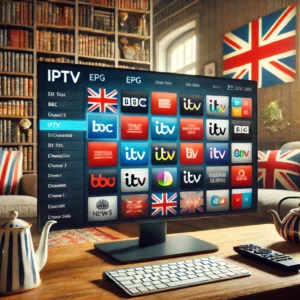
iptv web player -
Legal and Safety Considerations
H2: Is IPTV Legal?
IPTV itself is a legitimate technology used by many legal streaming services. However, the legality of IPTV services depends on the source of the content. Here’s a breakdown of what you need to know about IPTV legality:
1. Legitimate IPTV Services:
- Subscription-Based Services: Platforms like Netflix, Hulu, Amazon Prime Video, and other subscription services use IPTV technology to deliver content. These services operate legally and have the necessary licenses for their content.
- Free-to-Air Channels: Some IPTV services offer access to free-to-air channels, which are broadcast without encryption. Accessing these channels through IPTV is generally legal.
2. Unauthorized IPTV Services:
- Pirated Content: Many unauthorized IPTV services offer access to pirated content, including live TV channels, movies, and sports events. These services do not have the proper licensing and are illegal.
- Legal Risks: Using unauthorized IPTV services can lead to legal consequences, including fines and penalties. It’s important to verify that the IPTV service you use has the rights to distribute the content.
3. How to Ensure You’re Using IPTV Legally:
- Research the Provider: Before subscribing to an IPTV service, research the provider to ensure they are legitimate and licensed to distribute the content.
- Avoid “Too Good to Be True” Deals: Be cautious of IPTV services that offer an extensive range of premium channels at a significantly lower price. These are often illegal.
- Check Reviews and Reputation: Look for reviews and ratings from other users to verify the legitimacy of the IPTV service.
H2: Protecting Your Privacy and Security
When using IPTV services, especially on Windows, it’s crucial to protect your privacy and ensure your security. Here are some tips to keep your streaming safe:
1. Use a VPN:
- What is a VPN?: A Virtual Private Network (VPN) encrypts your internet connection and hides your IP address, providing an extra layer of privacy.
- Benefits of a VPN: Using a VPN can help protect your data from hackers, prevent ISP throttling, and allow you to access geo-restricted content.
- Recommended VPNs: Some popular VPN services include NordVPN, ExpressVPN, and CyberGhost. Ensure you choose a reputable VPN with strong encryption and a no-logs policy.
2. Avoid Phishing and Malware:
- Be Cautious with Links: Avoid clicking on suspicious links or downloading files from untrusted sources. These could be phishing attempts or contain malware.
- Install Antivirus Software: Use reliable antivirus software to protect your system from malware and other threats. Regularly update your antivirus to ensure it can defend against the latest threats.
3. Secure Your Network:
- Use Strong Passwords: Ensure your Wi–Fi network is secured with a strong password. Avoid using default passwords for your router and other devices.
- Enable Network Encryption: Use WPA3 or WPA2 encryption for your Wi-Fi network to prevent unauthorized access.
4. Regularly Update Software:
- Keep Your IPTV Player Updated: Regular updates often include security patches that protect against vulnerabilities.
- Update Your Operating System: Ensure your Windows operating system is up-to-date with the latest security patches and updates.
Summary Table: Legal and Safety Tips
Aspect Tip Legality Use legitimate IPTV services with proper licensing. VPN Use a reputable VPN to protect your privacy and access geo-restricted content. Phishing and Malware Avoid suspicious links and install antivirus software. Network Security Secure your Wi-Fi with strong passwords and encryption. Software Updates Regularly update your IPTV player and operating system. By following these legal and safety considerations, you can enjoy IPTV content securely and legally on your Windows device.
Conclusion
-
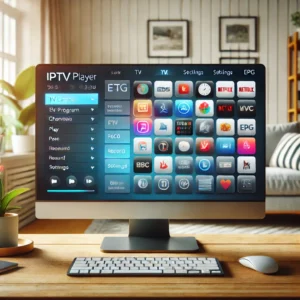
iptv web player H1: Final Thoughts on Choosing the Best IPTV Player for Windows
- Choosing the best IPTV player for Windows can significantly enhance your viewing experience, providing access to a vast array of content with ease and convenience. This guide has explored various aspects, from understanding IPTV and key features to reviewing top players and legal considerations.Recap of Key Points:
- Understanding IPTV: IPTV is a versatile technology that delivers TV content over the internet, offering flexibility and a wide range of channels.
- Key Features: Look for essential features such as user-friendly interfaces, EPG support, and compatibility with various file formats. Advanced users might prioritize features like multi-device support and integration with streaming services.
- Top Players: VLC, Kodi, Perfect Player, MyIPTV Player, and ProgDVB/ProgTV are some of the best IPTV players for Windows, each with unique strengths and features.
- Comparisons: Detailed comparisons help you choose the right player based on your specific needs and preferences.
- Setup and Troubleshooting: Step-by-step guides for setting up each player ensure you can start streaming with ease. Troubleshooting tips help resolve common issues.
- Legal and Safety Considerations: Ensuring you use IPTV services legally and protecting your privacy and security are crucial for a safe and enjoyable experience.
Call to Action
Try out the recommended IPTV players and see which one fits your needs best. Remember to prioritize legality and security when selecting and using IPTV services. Share your experiences and recommendations in the comments to help others make informed decisions.
FAQs
H2: Frequently Asked Questions about IPTV Players for Windows
Q1: What is the best IPTV player for Windows?
- A: The best IPTV player for Windows depends on your needs. VLC Media Player is great for simplicity and versatility, while Kodi offers extensive customization and advanced features. Perfect Player and MyIPTV Player are user-friendly options with good functionalities.
Q2: How do I install an IPTV player on Windows?
- A: Download the IPTV player from its official website or the Microsoft Store. Follow the installation instructions provided by the software. Then, configure the player with your IPTV playlist URL to start streaming.
Q3: Can I use VLC as an IPTV player?
- A: Yes, VLC Media Player can be used as an IPTV player. You can add your IPTV playlist URL via the
Open Network Streamoption in theMediamenu to start streaming.
Q4: What are the advantages of using an IPTV player?
- A: IPTV players offer a user-friendly interface, support for various file formats, EPG support, and recording capabilities. They enhance the IPTV viewing experience by providing easy navigation and customization options.
Q5: Is IPTV legal to use?
- A: IPTV itself is a legal technology. However, the legality of IPTV services depends on whether they have the proper licenses to distribute content. Using unauthorized IPTV services that offer pirated content is illegal.
Q6: How can I protect my privacy while using IPTV?
- A: Use a reputable VPN to encrypt your internet connection and hide your IP address. Avoid suspicious links and downloads, secure your network with strong passwords, and keep your software updated.
Q7: What should I do if my IPTV player is buffering or lagging?
- A: Ensure your internet connection is stable and fast enough for streaming. Lower the streaming quality, close other bandwidth-consuming applications, and check if the player’s settings need adjustment.
By following this guide, you can make an informed decision on the best IPTV player for your needs, ensuring a smooth, secure, and enjoyable streaming experience on your Windows device.
